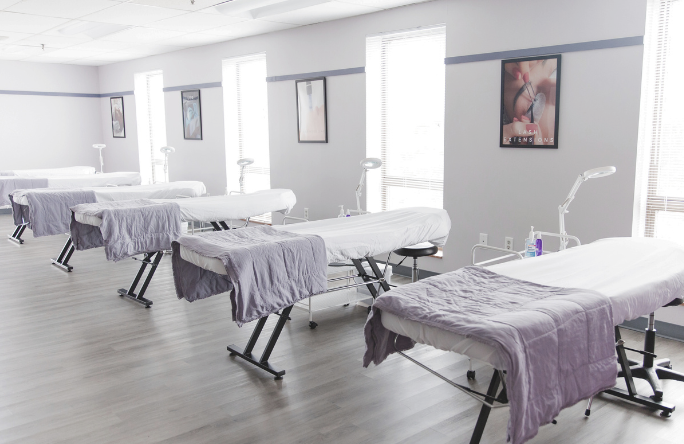
Dermaplaning has gained popularity as a highly effective exfoliation and hair removal treatment in the world of skincare. This non-invasive procedure not only leaves your skin smoother and more radiant but also helps makeup go on flawlessly. Whether you're an esthetician looking to offer this service or a client curious about the benefits, this guide will provide you with valuable insights into the world of dermaplaning.
Section 1: What is Dermaplaning?
Dermaplaning is a cosmetic procedure that involves the gentle scraping of the skin's surface using a scalpel. This manual exfoliation technique effectively removes dead skin cells and fine vellus hair, commonly known as "peach fuzz." The result is smoother, more youthful-looking skin.
Section 2: Benefits of Dermaplaning
For Clients:
-
Improved Skin Texture: Dermaplaning leaves your skin feeling incredibly smooth and soft by removing the top layer of dead skin cells.
-
Brighter Complexion: The procedure enhances your skin's natural radiance by eliminating dullness and promoting a healthy glow.
-
Better Product Absorption: With the dead skin cells gone, skincare products penetrate deeper into the skin, making them more effective.
-
Makeup Application: Dermaplaning creates a smooth canvas for makeup, allowing it to be applied more evenly, and reducing the appearance of fine lines and wrinkles.
For Estheticians:
-
Client Satisfaction: Offering dermaplaning can boost your client base and overall satisfaction, as clients appreciate the immediate results.
-
Additional Revenue: Dermaplaning can be a lucrative service to add to your menu, contributing to your business's bottom line.
-
Client Education: You can educate clients about proper skincare routines and product usage post-treatment, fostering long-term relationships.
Section 3: The Dermaplaning Procedure
For Estheticians:
-
Preparation: Ensure that your client is a good candidate for the service and make sure you review their client health history and consent forms.
-
The Technique: Hold the scalpel at a 45-degree angle and gently glide it over the skin's surface, removing dead skin cells and peach fuzz. Be cautious around sensitive areas like the eyes.
-
Post-Treatment Care: Advise your client on skincare products to use after the procedure, including sunscreen to protect the freshly exposed skin.
For Clients:
-
Consultation: Discuss your skincare concerns and medical history with the esthetician to ensure dermaplaning is suitable for you.
-
During the Procedure: You may feel a gentle scraping sensation, but it should not be painful. Relax and trust your esthetician's expertise.
-
Post-Treatment: Follow the recommended skincare routine and use sunscreen to protect your skin from UV damage.
Section 4: Safety Considerations
For Estheticians:
-
Training: Undergo proper training and certification in dermaplaning to ensure you perform the procedure safely and effectively.
-
Hygiene: Maintain strict hygiene practices, including sanitizing equipment and using disposable blades for each client.
For Clients:
-
Medical Conditions: Inform your esthetician about any medical conditions, allergies, or medications you are taking to ensure your safety.
-
At-Home Dermaplaning: Avoid attempting dermaplaning at home with non-professional tools to prevent injury or infection.
Dermaplaning is a versatile skincare treatment that offers numerous benefits to both estheticians and clients. For estheticians, it can be a profitable addition to your services, while clients can enjoy smoother, more radiant skin. Remember, safety and proper training are paramount in delivering successful dermaplaning experiences. Whether you're a skincare professional or someone seeking to enhance their skincare routine, dermaplaning is a valuable option to consider for achieving beautiful, glowing skin.

















